Common Reasons Why Your Fireplace is Smoky
Posted in Gas Fireplace Cleaning, on October 24, 2024
Your fireplace is meant to help create ambiance and increase comfort in your home. It contributes to a visual appeal while also promoting warmth and comfort in the cooler months. However, when your fireplace becomes excessively smoky, it ruins its functionality and aesthetics. There are many reasons why your fireplace may be too smoky, all of which are attributed to wood-burning fireplaces. Gas fireplaces simply do not get smoky because there is nothing actually burning. However, if you enjoy having a wood fireplace, adopting the proper fireplace maintenance protocols can help reduce smokiness. If you struggle with caring for your fireplace or are looking for an upgrade, contact Fireplace Experts. We offer fireplace cleaning and gas fireplace installation in Toronto and the GTA.
The Issue with Wood-Burning Fireplaces
.jpg) Fireplace smokiness is only a prominent issue for those who own a wood-burning fireplace. Homeowners who have gas fireplaces do not experience smokiness. Wood-burning fireplaces burn wood, as the name suggests. The process of burning wood results in the release of smoke, which is a combination of carbon dioxide, carbon monoxide, and some kinds of carbon soot.
Fireplace smokiness is only a prominent issue for those who own a wood-burning fireplace. Homeowners who have gas fireplaces do not experience smokiness. Wood-burning fireplaces burn wood, as the name suggests. The process of burning wood results in the release of smoke, which is a combination of carbon dioxide, carbon monoxide, and some kinds of carbon soot.
Not only does this cause discomfort when released into your living space, but it also can be dangerous. It becomes relatively easy to inhale the smoke that is radiating from your fireplace. This smoke can cause short-term symptoms like coughing, nausea, and itchy eyes, nose and throat. This can ruin your quality of life and that of your family. Long-term side-effects of an unaddressed smoky fireplace are more serious. You can experience difficulty breathing and can even suffer from poor respiration and heart function. This makes smokey fireplace not only a visual nuisance but a health risk as well. Taking measures to avoid a smoky fireplace will help improve your family’s quality of life while reducing the risk of health issues.
Why Your Fireplace is Smoky
There are numerous reasons why your fireplace may be smoky, and many of them are due to poor fireplace maintenance.
- Poor Airflow: If your fireplace has poor airflow, then it may be difficult for smoke to vent out. This lack of ventilation is often caused by some type of blockage or buildup in your chimney. The narrower the chimney, the less smoke that can flow out. Conducting regular maintenance and chimney inspections can help you effectively identify and clear blockages.
- Improper Wood: In order to avoid excessive smoke, you need to burn the correct type of wood in your fireplace. Utilizing wood that is damp or unseasoned will lead to smokiness. Ensure that you store wood in a cool, dry place when not in use and inspect it prior to use. Also, avoid using fresh wood, also known as green wood. It also has a much higher moisture content that will contribute to smoke. Try to use wood that has been seasoned for at least six months.
- Wrong Fire Building: Your kindling must be arranged in a particular way in order to avoid heavy smoke. Utilizing too many large pieces of wood and overcrowding the firebox can inhibit airflow. You should use the teepee method or log cabin method when arranging your firewood. This will direct the smoke up your chimney and encourage strong air circulation.
- Negative Air Pressure: If your home has a strong exhaust system, this may prevent smoke from flowing through your chimney. Instead, the smoke will be drawn into your home. Although the smoke should eventually leave through your exhaust vents, it doesn’t prevent you and your family from inhaling smoke along the way. Opening windows and doors can help release some of the air pressure, allowing the smoke to escape through the chimney.
- Lack of Cleaning: If you do not regularly clean your wood-burning fireplace, there is an excellent chance that you will experience excessive smoke. Over time, creosote and soot can build up in your fireplace, and if it is not cleaned, it will continue to produce smoke every time it is on.
Avoid Smokiness with Gas Fireplace Installation
Overall, ensuring proper fireplace cleaning and regular fireplace maintenance is essential for preserving your wood-burning fireplace. However, it is important to note that wood burning fireplaces are much more dangerous and difficult to maintain than gas. That is why we always recommend that you opt for gas fireplace installation when you notice excess smoke. It is safer, cleaner and does not produce smoke. So rather than going though the hassle of cleaning your entire chimney and fireplace, choose gas. For those seeking professional assistance, Fireplace Experts is here to help with all your cleaning and installation needs in Toronto and the GTA. Embrace the warmth and charm of your fireplace with confidence! Call now for gas fireplace installation.
